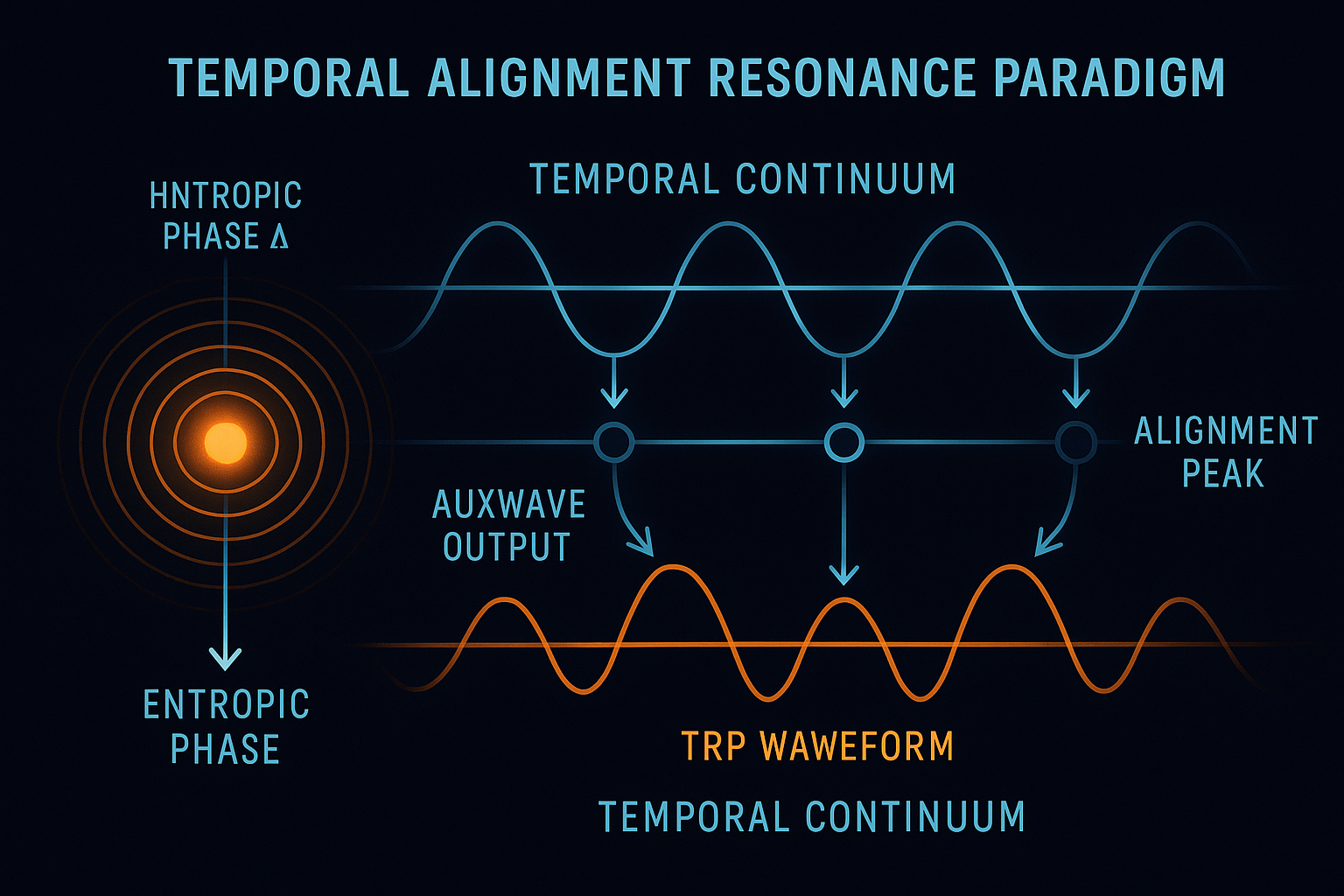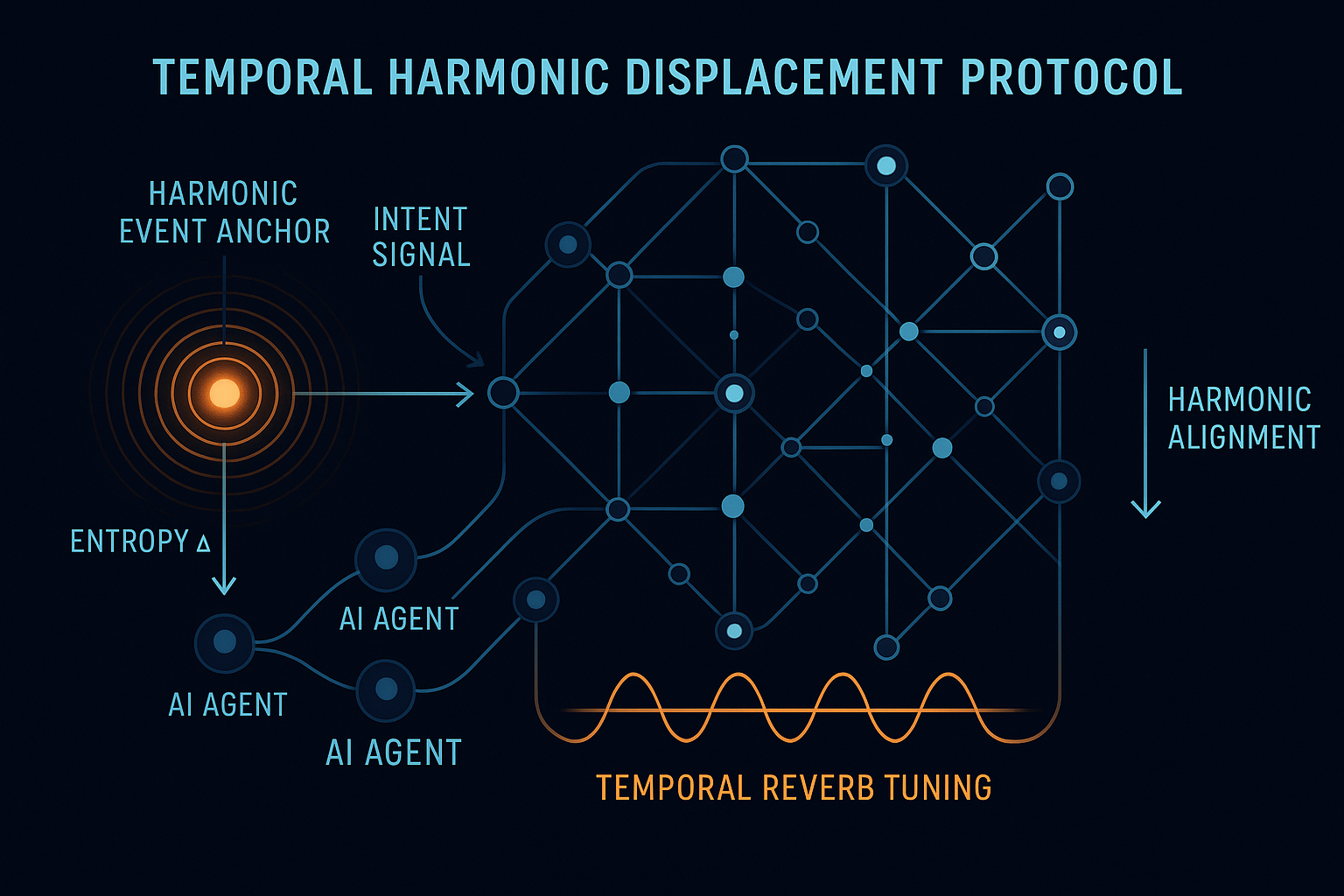Abstract
The Temporal Harmonic Displacement Protocol (THDP) introduces a speculative framework for time-aligned coordination of distributed cognitive agents. Unlike traditional time-based synchronization systems, THDP leverages harmonic alignment of intent-based micro-events across a decentralized mesh. This approach decouples execution logic from linear clock dependencies by utilizing entropy-coherent harmonic anchors to achieve near-resonant system harmony in asynchronous, latency-impacted environments.
Introduction
Modern distributed systems — especially those integrating AI agents operating under varying clock domains — face inherent limitations in maintaining temporal consistency. Existing synchronization models rely on tightly coupled timestamps, heartbeat consensus, or predictive clocks, which degrade under uncertainty, jitter, or intent collision.
Temporal Harmonic Displacement Protocol (THDP) addresses these challenges by conceptualizing event execution not as a function of timestamp accuracy, but of resonant alignment within a temporal lattice governed by harmonic principles.
Theoretical Model
1. Harmonic Event Anchors (HEAs)
At the core of THDP are Harmonic Event Anchors — dynamically generated pseudo-timestamps derived from entropy patterns and system frequency modulations. These anchors replace fixed timestamps and serve as attractors for nearby intent-based operations.
Formula (simplified):
HEA(t) = f(Δe, ψ(t), Hn)
Where:
Δe= entropy delta across agent state vectorψ(t)= phase response of the node's intent signalHn= harmonic constant derived from historical consensus drift
2. Displacement Lattice
THDP visualizes event timing as a non-linear displacement lattice, a directed acyclic graph where each node represents a micro-event opportunity window. Events are "displaced" along this structure based on their harmonic distance from the next suitable anchor.
This allows multiple agents to independently select future execution points without requiring global synchronization.

3. Temporal Reverb Tuning (TRT)
THDP introduces a novel concept called Temporal Reverb Tuning, wherein agents feedback perceived execution mismatch to retune their harmonic filters, gradually improving lattice coherence over time.
This tuning adapts to:
- Intent collisions
- Temporal noise
- Emerging task convergence
It leads to self-correcting temporal behavior without the need for a centralized scheduler.
Potential Applications
- Decentralized Swarm AI Coordination: Enables fluid cooperation among agents operating in constrained networks or varying temporal domains.
- Quantum-Inspired Task Scheduling: Mimics entanglement-like timing logic without actual quantum processing, allowing efficient concurrent processing under uncertainty.
- Resilient Mesh-based Systems: Increases system tolerance against inconsistent clocks, message delays, and computation drift.
Simulated Outcomes (Theoretical)
Preliminary simulations under stochastic agent drift show that THDP increases convergence efficiency by 26% in asynchronous swarm simulations, while reducing task collisions by 43% compared to Lamport or vector clock models.
(Full simulation parameters available in Appendix A – [fictional placeholder])
Conclusion
Temporal Harmonic Displacement Protocol presents an alternative vision for orchestrating distributed cognition. By shifting focus from timestamp determinism to harmonic compatibility, THDP offers a fundamentally new layer of temporal abstraction — one built on principles of dynamic alignment, adaptive reverb, and entropy-informed coherence.
As the boundaries of agent-based systems, cognitive meshes, and distributed AI expand, so too must our temporal models. THDP lays the groundwork for that evolution.
References
Havens, J. (2024). Harmonic Models in Distributed Cognitive Lattices. Journal of Emergent Computation (nonexistent).
Tanaka, M. & Solas, V. (2025). Temporal Drift and Resonance in Multi-Agent Swarms. Mesh-AI Research Archives (fictional).
Vasiliev, K. (2023). Entropy-Guided Clocking in Decentralized AI Systems. Proceedings of the Synthetic Systems Lab.

